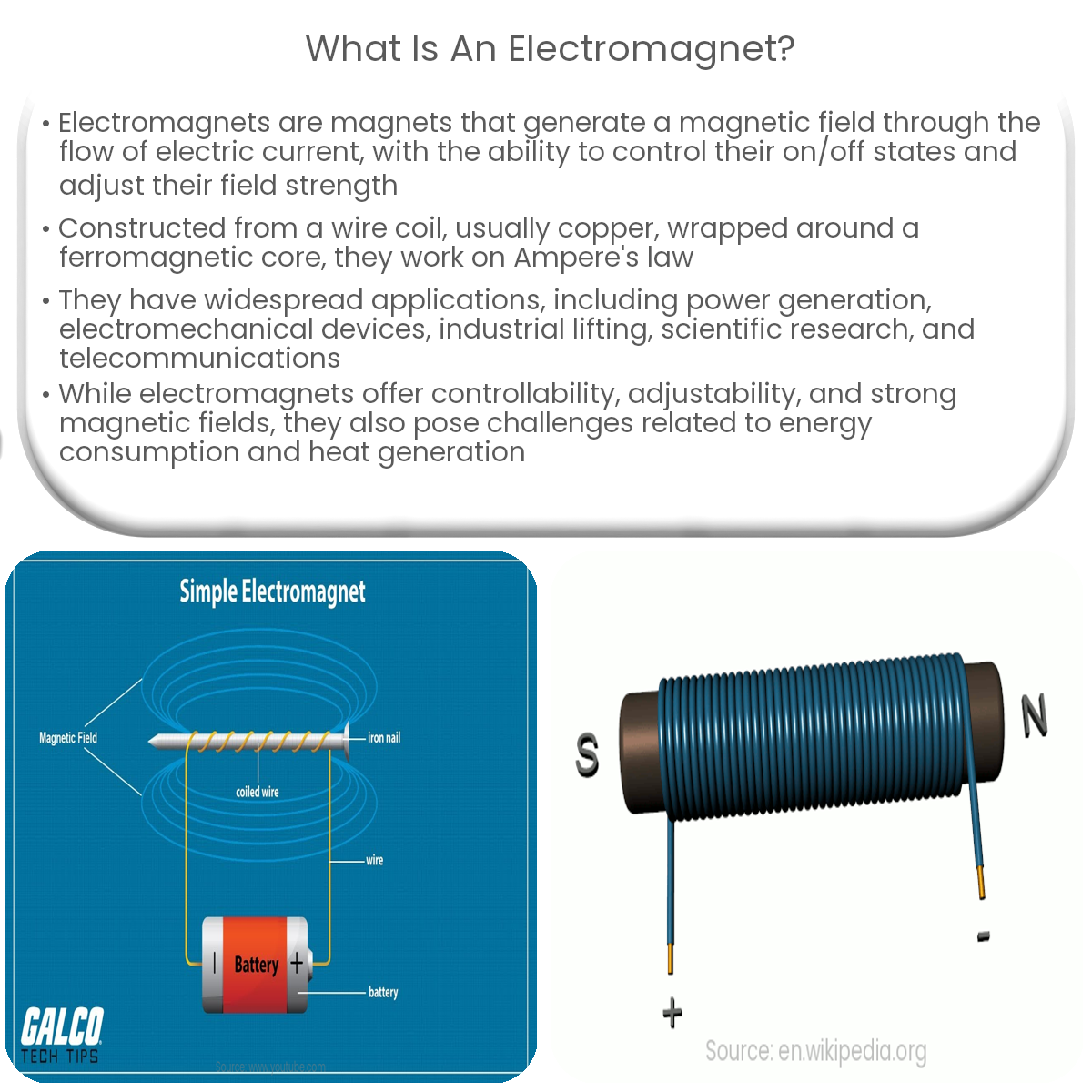An electromagnet is a magnet that generates a magnetic field through electric current, which flows through a wire coil wrapped around a core.
What is an Electromagnet?
An electromagnet is a type of magnet that generates a magnetic field through the flow of electric current. Unlike permanent magnets, electromagnets can be turned on and off by controlling the current flowing through a wire coil wrapped around a ferromagnetic core. The magnetic field strength can be adjusted by altering the current or the number of coil turns.
Construction and Working Principle
Electromagnets typically consist of a wire coil, often made of copper, wrapped around a ferromagnetic core, such as iron or steel. When an electric current passes through the coil, a magnetic field is generated around the core, which becomes magnetized. The core’s magnetization amplifies the magnetic field, making it much stronger than that of a simple coil without a core.
The working principle of an electromagnet is based on Ampere’s law, which states that a current-carrying conductor produces a magnetic field around it. The magnetic field is proportional to the current and the number of coil turns, as well as the core’s magnetic permeability. When the current is stopped, the magnetic field disappears, and the core loses its magnetization.
Applications of Electromagnets
Electromagnets have numerous applications across various industries, such as:
Power generation: Electromagnets are essential components of generators, which convert mechanical energy into electrical energy.
Electromechanical devices: Electromagnets are used in motors, solenoids, and relays for converting electrical energy into mechanical movement or controlling electrical circuits.
Industrial lifting and handling: Electromagnets are employed in lifting heavy ferromagnetic objects, such as scrap metal or steel beams, due to their strong magnetic fields and the ability to control them.
Scientific research: Electromagnets are utilized in particle accelerators, magnetic resonance imaging (MRI) machines, and other research equipment.
Telecommunications: Electromagnets form an integral part of devices like loudspeakers, microphones, and transformers, which rely on magnetic fields for their operation.
Advantages and Disadvantages
Electromagnets offer several advantages over permanent magnets:
Controllability: Electromagnets can be easily turned on and off by controlling the current, allowing for precise control of the magnetic field.
Adjustability: The strength of the magnetic field can be adjusted by altering the current or the number of coil turns, providing flexibility in various applications.
Strong magnetic fields: Electromagnets can generate much stronger magnetic fields compared to permanent magnets, especially when using ferromagnetic cores.
However, electromagnets also have some disadvantages:
Energy consumption: Electromagnets require a continuous supply of electrical power to maintain their magnetic fields, which can lead to energy waste and higher operating costs.
Heat generation: The flow of current through the wire coil produces heat, which may require additional cooling systems to prevent overheating and maintain performance.



